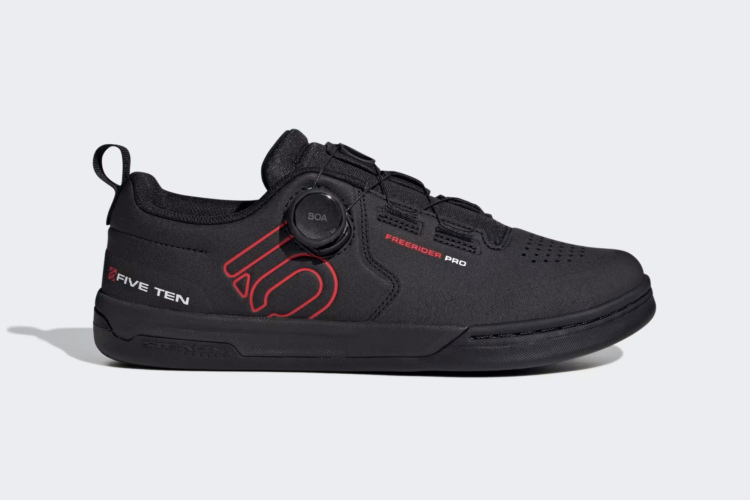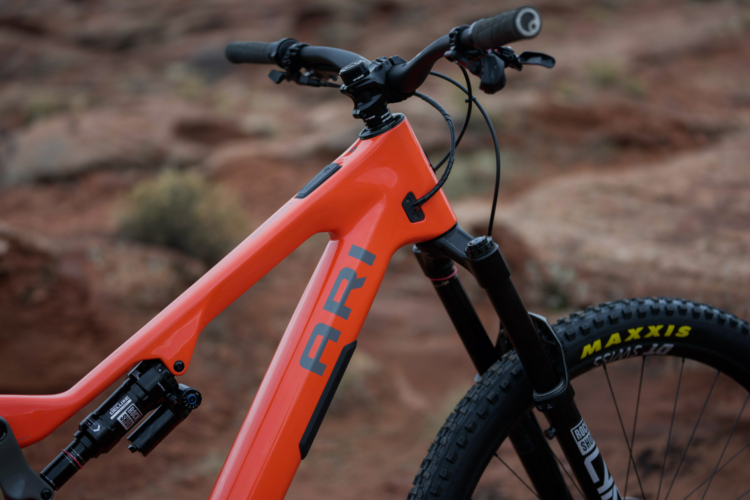
At Interbike last year I previewed the technology behind the Hayes Prime brakes, particularly the virtues of the poppet cam and new reach adjusters. This summer I finally got a chance to thoroughly give these brakes a go and this is my review.
Tech
The Prime Pro brakes represent somewhat of a departure from other Hayes components with a host of new features not found in the rest of the current line-up. The poppet cam technology inside the brake master and the re-designed lever / detented adjuster really sets the Primes apart from simple piston / reservoir systems. Here you’re getting a complex, scaled down version of a braking system that you would find on some sport bikes.

Checkout the video from Hayes below to see the poppet cam and how it adjusts the dead stroke.
In addition to the poppet cam, Hayes includes a bunch of other great features that make the Prime a truly premium brake. For starters, the Pro kit features titanium and anodized aluminum bolts to shave weight plus you get a two piece rotor (with the Pro sets) made from an aluminum center and stamped stainless steel brake surface.


The caliper is a redesign that is very user-friendly with an easy-to-remove bridge pin holding the two pads in place. With this system you can remove the pin and pull out the pads for a quick service or change without having to pull the caliper off. The higher placement of the two caliper bridge bolts and corresponding placement of material also makes for a stiffer caliper design.


Installation
These Prime brakes screamed out for abuse so I installed them on my DH rig. The brakes feature burly construction which makes them a natural choice on AM – DH bikes.
Installing the Primes on my Banshee Legend took about 40 minutes. Both hoses were long enough on my medium frame that I still needed to trim the brake lines a good 6 – 8 inches each. Don’t worry – Hayes supplies you with hose ends to do this operation. All you need is a proper brake housing cutter (a Park CN-10 or similar) and you’re golden.
After trimming the hose I installed the levers and calipers. It’s important to tighten the lever clamp top bolt so that there is no space left; torque the bottom clamp bolt at 3.4Nm. The caliper itself takes a bit more work to dial in but a tool like the Hayes Feel’R gauge makes life easy. Set the caliper squarely over the rotor and check the spacing using a gauge or two business cards on each side of the rotor; with the brake applied, tighten the caliper down to 9Nm.
Double check for leaks and proper torque before burnishing the pads with some safe stops (about 30-50) at medium speed. After that it takes a little more riding to really get the lever reach and contact points adjusted properly. I found sitting on the bike standing still is not good enough – I needed to hit the slopes to get a realistic feel for the levers. With the levers dialed I adjusted the contact points.

Performance
How well did the Prime brakes perform? After some serious trail time I have to say these are right up there with the other brands I have played with. Hayes comes out on top in terms of adjustment characteristics and the poppet cam works very well. The detents on the reach adjuster are easy to dial with positive feedback with a nice click between settings. All of the adjustments can be done with gloves on and without any tools needed to make things move.
The Primes offer roughly the same power as the Avid Codes and modulation that’s comparable to the ONE from Formula. I did notice that I needed a bit more finger force on my end to stop the bike than with other brakes I’ve tested. But stop they did. Even on the hardest courses at Blue Mountain, which are notorious for burning up brakes (Shot Glass and O-Chute), the Primes fared well. I did get some noise near the bottom of the runs but I didn’t get any fade. I definitely got these brakes super hot, so much so that the rotors changed to a blue color, which is a good indication of the amount of heat involved.
The Primes modulate very well and by playing with the contact point you can adjust how they engage. The brakes will ramp up faster if your contact point is closer to the bar, more slowly as you move away from the bar. By moving the lever out at the same time you can get the brake to work virtually any way you want it to work. I tend to set up my brakes to have the maximum pressure (fully engaged) with the levers parallel to the bar with about an inch in between the two. I have seen other people set their brakes so the lever touches the bar on maximum pressure (a big no no but who am I to say), and although I am sure you can do that, I didn’t. Throughout my tests with the Primes I always had consistent feel and no change in force through the braking stroke.

Having tanked my bike more than once (I broke my ankle and played ping pong with the bike down a slope), the Hayes Primes didn’t show any signs of damage – the levers survived and nothing was bent. As with any bike part, you will have to service these brakes. After every few rides or so I tend to pull the pads (easy with the Primes) and retract and extend them, just to make sure the pads don’t stick due to accumulated dirt and dust (doing this also keeps the seals moist). Checking up on your equipment also gives you a good indication of how much pad is left, leaving you enough time to order a new set if necessary.
All in all I think Hayes did a great job bringing a powerful and reliable brake to a highly competitive market. So for about $260 a wheel, try out a set and I think you too will be impressed.
Thanks to Joel Richardson and the folks at Hayes for sending down the brakes for review.





















4 Comments
Aug 19, 2011
Aug 18, 2011
Aug 18, 2011
Aug 19, 2011
I guess efforts at saving weight due to the extra from the aluminum spider.